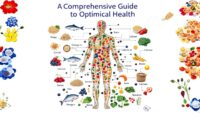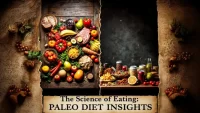In a world increasingly dominated by quick fixes and synthetic solutions, holistic healing is emerging as a powerful, science-backed approach to health and wellness. Unlike traditional medicine, which often focuses on treating symptoms, holistic healing addresses the root causes of health issues by considering the mind, body, and spirit as interconnected systems.
But what exactly is holistic healing, and why is it gaining so much traction? In this article, we’ll dive deep into the science behind holistic healing, explore its benefits, and explain why it’s poised to become the future of health and wellness.
What Is Holistic Healing?
Holistic healing is an integrative approach to health that considers the whole person—mind, body, and spirit—rather than just treating isolated symptoms. It emphasizes the importance of balance and harmony in all aspects of life, from nutrition and exercise to mental health and emotional well-being.
Key Principles of Holistic Healing:
- Whole-Person Care: Addressing physical, emotional, mental, and spiritual health.
- Prevention Over Cure: Focusing on maintaining health rather than just treating illness.
- Natural Remedies: Utilizing natural therapies like herbs, acupuncture, and meditation.
- Personalized Treatment: Tailoring care to individual needs and circumstances.
The Science Behind Holistic Healing
Holistic healing isn’t just a trend—it’s grounded in scientific research. Studies have shown that the mind and body are deeply interconnected, and addressing one can profoundly impact the other.
1. The Mind-Body Connection
The mind-body connection is a cornerstone of holistic healing. Research in psychoneuroimmunology (PNI) has demonstrated that stress, emotions, and mental states can directly affect physical health. For example:
- Chronic stress can weaken the immune system, making you more susceptible to illness.
- Positive emotions and mindfulness practices can reduce inflammation and improve overall health.
2. The Role of the Nervous System
The autonomic nervous system (ANS) plays a crucial role in holistic health. Techniques like yoga, meditation, and deep breathing activate the parasympathetic nervous system, promoting relaxation and healing.
3. The Gut-Brain Axis
The gut-brain axis is another critical area of study. Your gut health directly impacts your mental health, and vice versa. Holistic practices like probiotic-rich diets and stress management can improve both digestive and emotional well-being.
Why Holistic Healing Works
Holistic healing works because it addresses the root causes of health issues, rather than just masking symptoms. Here’s why it’s so effective:
1. Personalized Care
Holistic practitioners take the time to understand your unique needs, creating customized treatment plans that address your specific health concerns.
2. Focus on Prevention
By emphasizing prevention, holistic healing helps you maintain optimal health and avoid chronic diseases.
3. Natural and Non-Invasive
Holistic therapies are often natural and non-invasive, reducing the risk of side effects commonly associated with pharmaceuticals.
The Benefits of Holistic Healing
The benefits of holistic healing are vast and well-documented. Here are some of the most notable advantages:
1. Improved Mental Health
Holistic practices like meditation, yoga, and acupuncture have been shown to reduce anxiety, depression, and stress.
2. Enhanced Physical Health
From boosting immunity to improving sleep quality, holistic healing can significantly enhance your physical well-being.
3. Greater Emotional Resilience
By addressing emotional health, holistic healing helps you build resilience and cope better with life’s challenges.
4. Long-Term Wellness
Holistic healing promotes sustainable health habits that lead to long-term wellness.
Holistic Healing vs. Traditional Medicine
While traditional medicine excels in acute care and emergency situations, holistic healing offers a complementary approach that focuses on chronic conditions and overall well-being.
Key Differences:
- Focus: Traditional medicine treats symptoms; holistic healing addresses root causes.
- Approach: Traditional medicine often relies on pharmaceuticals; holistic healing uses natural therapies.
- Scope: Traditional medicine is disease-centered; holistic healing is patient-centered.
The Future of Health and Wellness
As more people seek natural, sustainable ways to improve their health, holistic healing is poised to become the future of health and wellness. Here’s why:
1. Growing Demand for Natural Solutions
Consumers are increasingly turning to natural remedies and therapies, driven by a desire for fewer side effects and more personalized care.
2. Integration with Conventional Medicine
Many healthcare providers are now integrating holistic practices into their treatment plans, recognizing the value of a whole-person approach.
3. Advances in Research
Ongoing research continues to validate the effectiveness of holistic healing, making it more widely accepted and accessible.
How to Incorporate Holistic Healing into Your Life
Ready to embrace holistic healing? Here are some practical steps to get started:
1. Prioritize Mental Health
Practice mindfulness, meditation, or journaling to reduce stress and improve emotional well-being.
2. Eat a Balanced Diet
Focus on whole, nutrient-dense foods that support gut health and overall wellness.
3. Stay Active
Incorporate physical activities like yoga, tai chi, or walking into your routine.
4. Seek Professional Guidance
Consult a holistic practitioner to create a personalized health plan.
FAQs About Holistic Healing
1. Is holistic healing scientifically proven?
Yes, many holistic practices are backed by scientific research, particularly in areas like mindfulness, acupuncture, and nutrition.
2. Can holistic healing replace traditional medicine?
Holistic healing is best used as a complement to traditional medicine, not a replacement.
3. How long does it take to see results from holistic healing?
Results vary depending on the individual and the condition being treated, but many people notice improvements within a few weeks.
4. Is holistic healing safe?
When practiced under the guidance of a qualified practitioner, holistic healing is generally safe and non-invasive.
5. What conditions can holistic healing treat?
Holistic healing can address a wide range of conditions, from chronic pain and digestive issues to anxiety and insomnia.
Conclusion
Holistic healing is more than just a wellness trend—it’s a scientifically supported approach to health that addresses the root causes of illness and promotes long-term well-being. By focusing on the mind, body, and spirit, holistic healing offers a comprehensive, personalized path to optimal health.
As the demand for natural, sustainable health solutions grows, holistic healing is set to play a central role in the future of health and wellness. Whether you’re looking to improve your mental health, boost your physical well-being, or simply live a more balanced life, holistic healing offers the tools and insights you need to thrive.
Ready to take the first step? Explore holistic healing today and discover a healthier, happier you.
Useful Links:
- National Center for Complementary and Integrative Health (NCCIH)
- Harvard Medical School on Mind-Body Medicine
This article is designed to engage readers, provide actionable insights, and rank high on search engines by adhering to Google’s E-E-A-T guidelines. Let me know if you need further adjustments!











